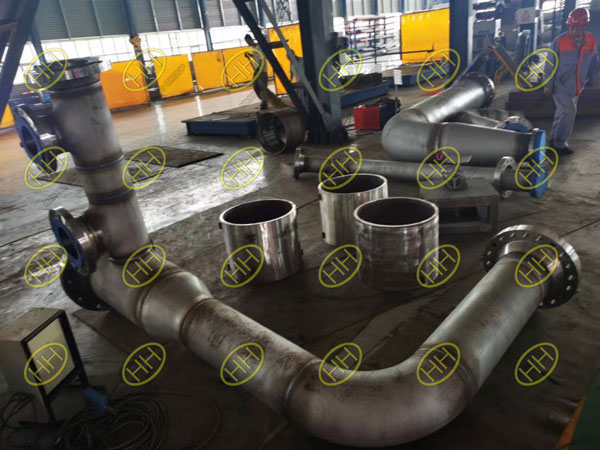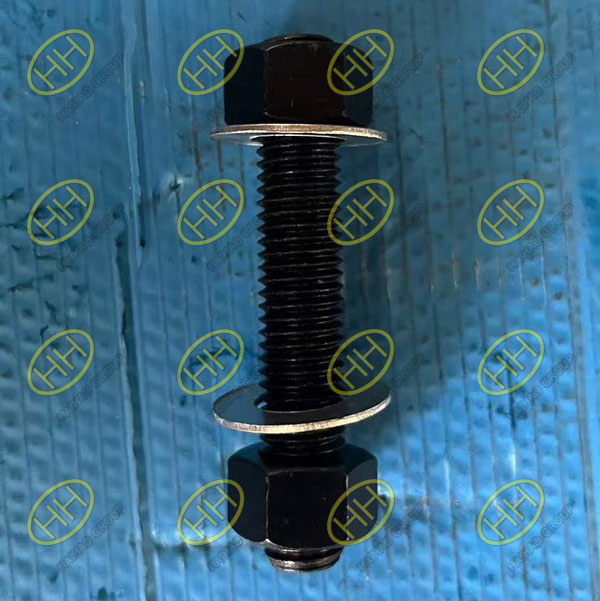Why Proper Thread Exposure Matters: 2–3 Threads Rule in Valve and Flange Bolt Tightening
In pipeline systems, flanged connections are commonly used to ensure reliable sealing and secure assembly between pipe sections, valves, and equipment. One often overlooked but critical detail in this process is the correct exposure of bolt threads after tightening. Industry best practices specify that 2 to 3 threads should remain visible beyond the nut once the bolt is fully tightened.
Here’s why this small detail matters—and how it impacts mechanical integrity, fatigue life, and long-term reliability.
1.Ensures Secure Bolt Engagement
Leaving 2 to 3 threads exposed ensures that the bolt has sufficient thread engagement inside the nut. This depth of engagement is critical for the bolt to withstand tensile and shear forces during operation.
In piping systems subject to thermal expansion, vibration, or pressure cycles, a small amount of exposed thread allows for micro-adjustments and prevents overstressing the connection.
Fully inserting the bolt into the nut (0 threads exposed) can cause incomplete engagement, potentially leading to loosening or failure.
If fewer than 2 threads are visible, the bolt may be too short, resulting in insufficient strength and risk of disconnection.
2.Minimizes Stress Concentration and Extends Fatigue Life
Proper thread exposure also plays a role in reducing internal residual stress within the bolt.
A bolt that is tightened correctly—without being overstretched—has a lower risk of developing fatigue cracks under cyclic loading.
With 2 to 3 threads exposed, the load is distributed more evenly across the engaged threads, minimizing localized stress concentration.
This balanced load distribution helps prevent fatigue failure, especially in systems with frequent load changes.
3.Prevents Thread Damage and Corrosion
Excessively exposed threads are prone to accidental contact, which can damage protective coatings like zinc plating or anti-corrosion layers.
Threads that protrude too far may rub against nearby equipment, causing surface damage.
Damaged threads are more vulnerable to corrosion, especially in harsh environments.
Keeping thread exposure within the 2–3 thread limit helps protect the integrity of the bolt and extends its service life.
4.Facilitates Future Disassembly and Adjustment
During installation or maintenance, you may need to fine-tune the position of a flange or valve. Leaving 2–3 threads exposed gives technicians the room they need to:
Easily turn the nut with standard tools.
Disassemble or re-tighten connections without excessive force.
Avoid the risk of “bottoming out” the nut or needing special tools for removal due to lack of working space.
5.Avoiding Too Long or Too Short Bolts
To ensure proper thread exposure, attention must be paid during material preparation and installation:
- a) Select the Correct Bolt Length
Choose bolts that, when tightened, naturally leave 2 to 3 threads exposed. Bolt length should match the flange thickness, gasket, washer, and nut height.
- b) Monitor Tightening Progress
During tightening, stop when the desired exposure is reached. Do not overtighten just to use up extra thread length—this can introduce unnecessary stress into the joint.
Conclusion: A Small Detail with Big Impact
The seemingly minor requirement of exposing 2 to 3 threads after bolt tightening plays a vital role in ensuring:
- Reliable mechanical performance
- Long-term connection stability
- Ease of future maintenance
- Resistance to corrosion and fatigue
At Haihao Group, we follow strict quality standards in every stage of piping component manufacturing and system assembly, including bolt and flange installations. Attention to detail ensures that our pipe fittings, flanges, and valve connections perform reliably—even in the most demanding environments. Email:sales@haihaogroup.com


